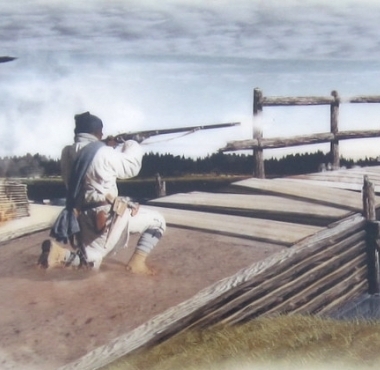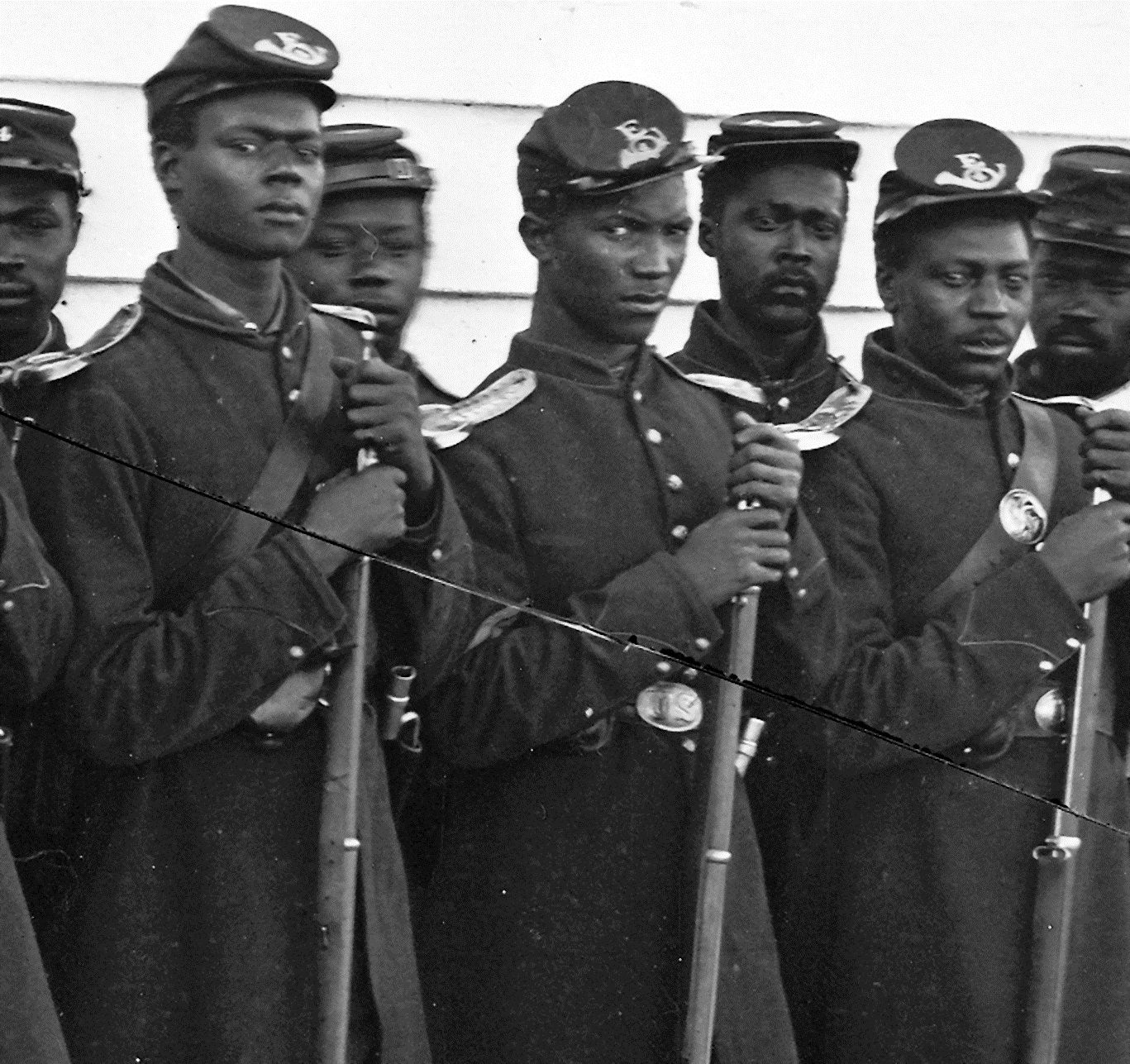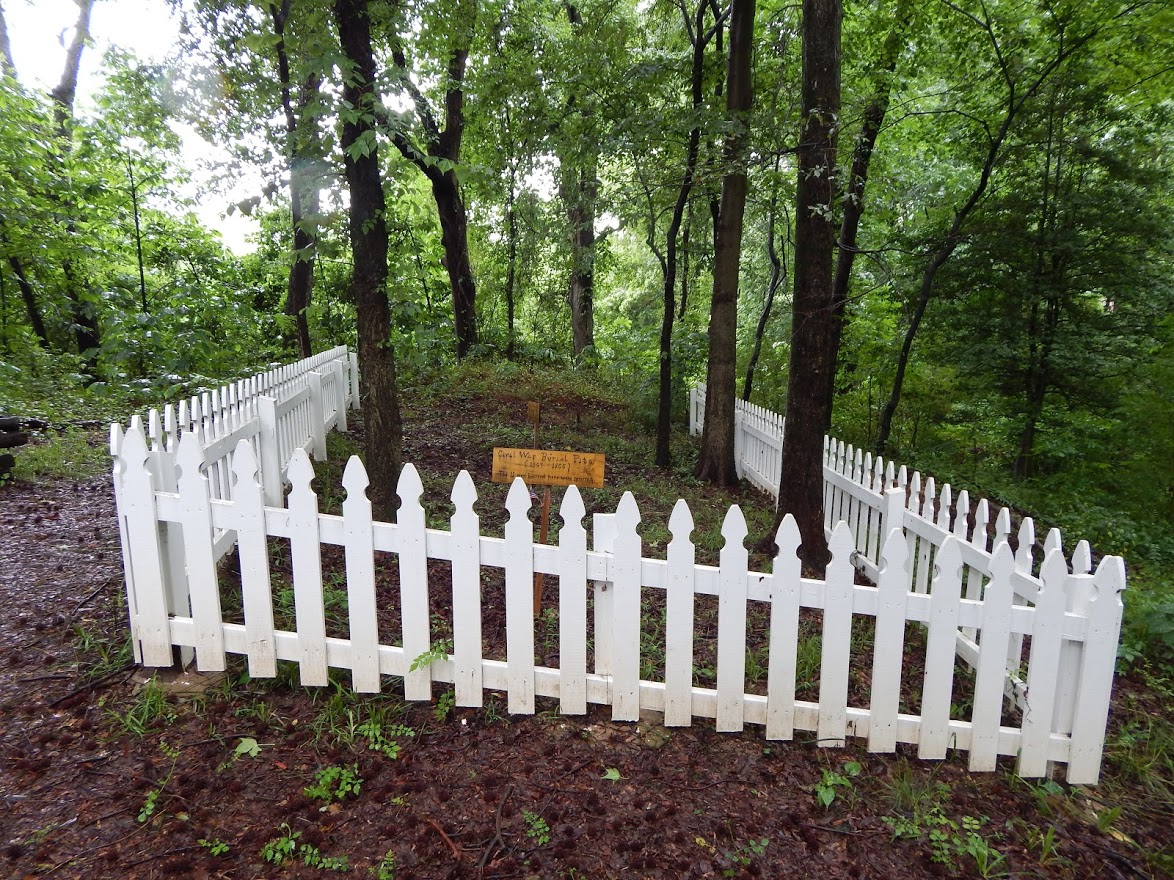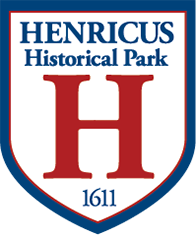In honor of Black History Month, Henricus is sharing stories of African American soldiers who fought during the Revolutionary and Civil Wars around both Chesterfield and Henrico counties.
The American Revolution
 If you were a citizen of Chesterfield County in 1781, you would have witnessed the American Revolution come right through your community. If you were a white Virginian, you would have experienced compulsory militia service within your family. Some of your neighbors would have been recruited into the Continental Army and served in either George Washington’s Main Army, or the northern or southern army. Regardless, Virginians were all-in, perhaps following the fiery words “Liberty or Death” orated by Patrick Henry in Richmond in 1775.
If you were a citizen of Chesterfield County in 1781, you would have witnessed the American Revolution come right through your community. If you were a white Virginian, you would have experienced compulsory militia service within your family. Some of your neighbors would have been recruited into the Continental Army and served in either George Washington’s Main Army, or the northern or southern army. Regardless, Virginians were all-in, perhaps following the fiery words “Liberty or Death” orated by Patrick Henry in Richmond in 1775.
Black Virginians served since the beginning. Private William Flora, a free man of color, served in the 2nd Virginia Regiment and was the hero of the December 1775 Battle of Great Bridge, Virginia, one of the first American victories of the war. Black Virginians were volunteering throughout 1776 even before Governor Patrick Henry adjusted the militia laws of Virginia for that purpose in 1777. By 1778 there were approximately 140 black Virginians among the several hundred men sharing the miserable conditions at Valley Forge. These men would form the core of troops that would win the Battle of Monmouth, NJ in June 1778.
The Continental Army set up a training depot at Chesterfield Courthouse by January 1781. This would be where Virginians would assemble and be trained to join General Nathaniel Greene’s southern Continental Army. Black men served as infantry, artificers, clothiers, couriers, etc. at Chesterfield. Dozens of free men of color, for example, were enlisted into Gaskin’s Continental Battalion, an 18-month regiment that served through the Siege of Yorktown and contributed to the surrender of Cornwallis’ troops there in October 1781.
During the American Revolution, black Virginia men camped, marched, and fought side by side with their white neighbors in pursuit of liberty and independence from King George III and English rule. Their role is still often overlooked and neglected by curriculum and our social understanding of that conflict; but for their contemporaries - from George Washington to James Monroe, to future Virginia presidents who served in the army with these black Patriots, to European volunteer soldiers like General Baron de Steuben or General Marquis de Lafayette who commanded black Patriots in and through Chesterfield County - their opinions on race, service, and citizenship would have no doubt been shaped from these deeds of bravery and sacrifice.
When the new Federal government authorized pensions and land grants for those who served during the war, these “free men of color” went to their local courthouse to have their statement taken and authorized. It would often be their white officers or comrades who verified their claim and aided them in their pursuit of due equal compensation and recognition. They served and suffered together and that was enough for some level of equal respect, even if society and the law were still far from that end. Together these Patriots built the foundation of the country.
When you drive by the Chesterfield County government and courthouse complex, picture the 160 winter huts that would have been there and then imagine those Virginians, both white and black and some barefoot or with rags around their feet, being inspected by General Steuben, who would have seen them all as American soldiers suffering just the same. These soldiers went through these hardships, maybe not for the $6 a month salary they rarely received, but perhaps for the ideas of the Revolution to take root.
The Civil War
 United States Colored Troops
United States Colored Troops
If you stand on the bluff just outside Henricus Historical Park and look across the James River, you can see the land where Henry Cox’s plantation of Farmer’s Rest formerly stood. In addition to the main house, this 26-acre plot of land had three additional buildings, along with quarters for the 73 enslaved workers that were there in an 1850 census.
Those enslaved people may have been astonished to learn that a mere 15 years later, the plantation they worked would see a drastically different sight than they were used to. On March 26, 1865, President Abraham Lincoln, General Ulysses S. Grant, and General Edward Ord, along with their wives, crossed the James River to Aiken’s Landing, where the north side of the Varina-Enon bridge meets the land today.
Traveling north along Varina Road and onto Cox’s plantation, the military leaders reviewed the Army of the James, including the 25th Corps, which consisted almost entirely of United States Colored Troops.
Notably, eight days later on April 3, 1865, the 25th Corps, under the command of Major General Godfrey Weitzel, was among the first units to enter Richmond - the capital of the Confederacy. These USCT troops who one week earlier had been mustered on a plantation were thus directly involved in the first step towards the end of the Civil War, and the end of slavery in the United States.
 The Dutch Gap Canal
The Dutch Gap Canal
In August 1864, construction began on the Dutch Gap Canal. The canal was dug into a narrow strip of land formed by a loop in the James River. The purpose of the canal was to allow Union gunboats to move safely toward Richmond while bypassing a portion of the river that was under heavy fire by Confederate troops.
Initially, soldiers from both African American and White Union regiments were assigned to help dig the Canal. Progress quickly slowed, though, and as the project dragged from weeks to months the bulk of the labor increasingly fell on African American troops as well as various laborers from the Freedmen’s Colony of Roanoke Island.
These brave men were plagued by disease and expected to work in a hailstorm of Confederate gunfire and artillery. An article published in the January 21, 1865 edition of Harper’s Weekly reported that by November 1864, a total of fifteen thousand cubic yards of earth had been removed by hand, and a steam dredge removed an additional fifty tons a day. Unfortunately, an engineering mishap nullified much of the progress that had been made on the canal, and the project was temporarily abandoned.
 Approximately 50 men, many of them African American soldiers, were killed by the Confederate fire and buried along the south slope of the bluff nearby. After the war, the remains of many of these men were relocated to other cemeteries. If you visit Henricus Historical Park, you can see the depressions left in the ground by a number of these graves. These markers are maintained as a memorial to honor these men.
Approximately 50 men, many of them African American soldiers, were killed by the Confederate fire and buried along the south slope of the bluff nearby. After the war, the remains of many of these men were relocated to other cemeteries. If you visit Henricus Historical Park, you can see the depressions left in the ground by a number of these graves. These markers are maintained as a memorial to honor these men.
More than a century later, botanists discovered fossilized plant remains in the earth at the Dutch Gap Canal site. A 2013 study of the fossils identified them as one of the oldest flowering plant species to be discovered in North America. The plant, an ancient relative of the bleeding heart, was given the scientific name Patomacapnos apeleutheuron. The second word – apeleutheuron – is derived from the Greek word for “freedmen”. In their scientific report on the plant, paleobotanists Nathan Jud and Leo Hickey wrote, “This name honors the freedmen who dug the Dutch Gap Canal in Virginia During the U.S Civil War in 1864, exposing the sediments from which this fossil was collected.”


